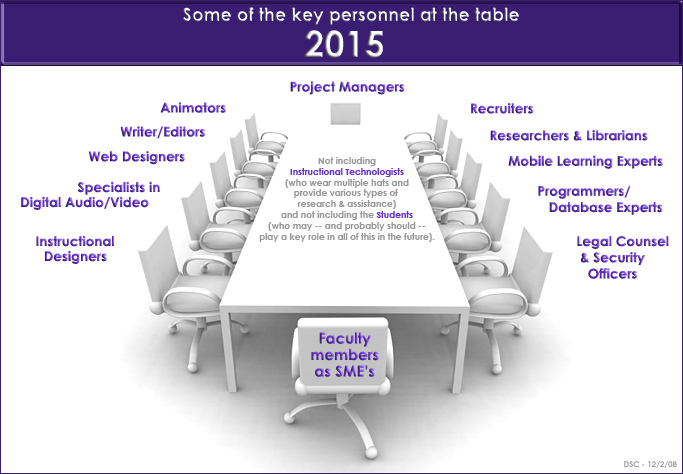Also see:
.
Also see:
Also see:
Also see:
.
Also see:
Also see:
What do we need? — from weblogg-ed.com by Will Richardson
So I’m asking for a little crowdsourcing feedback for a chapter I’m writing. I’m trying to frame out all the things that ideally need to be in place for an existing school to make the transition to one that provides a more relevant learning experience for kids in the context of the social online technologies that are disrupting the current model. Call it School 2.0, a 21st Centuryized School, or something else, but I’m wondering what qualities or conditions should we be working toward in order to successfully make a transition like that?
Here’s what I’ve been thinking (in no particular order in terms of the big buckets):
From DSC:
Will provides a nice list of areas/items that need addressing…and asks for further feedback here.
.
Two professors examine the American higher education system and explain how students and parents can get the most for their money.
Andrew Hacker
Professor of Political Science at Queens College, New York, and co-author of “Higher Education? How Colleges Are Wasting Our Money and Failing Our Kids – And What We Can Do About It”
Mark Taylor
Chair of the Department of Religion at Columbia University, professor of philosophy of religion at Union Theological Seminary, and professor emeritus of humanities at Williams College. His latest book is titled, “Crisis on Campus: A Bold Plan for Reforming our Colleges and Universities.”
From Spring 2010
…
From DSC:
Most certainly, not everything that Thomas Frey says will take place…but I’ll bet you he’s right on a number of accounts. Whether he’s right or not, the potential scenarios he brings up ought to give us pause to reflect on ways to respond to these situations…on ways to spot and take advantage of the various opportunities that arise (which will only happen to those organizations who are alert and looking for them).
Evaluating Part-Time Faculty — from Academic Impressions by Daniel Fusch
This fall, the US Department of Education is expected to release a report showing a further drop in the percentage of US faculty who are tenured or tenure-track (which as of 2007 had already dropped to 31%, down from 57% in 1975). This comes on the heels of a recent study published in the journal Educational Policy that showed lower persistence rates for freshmen who have many of their courses taught by adjuncts, prompting fresh debate over what the increased use of contingent faculty may mean for the quality of education.
From DSC:
I don’t mean to be critical or find fault here…but I do wonder how many resources are put into full-time faculty’s training and development in terms of helping them learn how to TEACH (vs. doing research, publishing their findings, etc.). Teaching is tough and is both a science and an art. Few can be good at everything.
Also, I think there is an emphasis on teaching at some institutions, but there may be more of an emphasis on publishing and doing research at other institutions.
For example, I went to Northwestern University in Evanston, IL. Currently, NU charges about $55,000 a year to go there. Does the student get top notch TEACHING? In many cases, I doubt it. The students may get subject matter experts (SME’s) who know their subject matter like the back of their hand or they make be taking a course from someone who has carved out a name for himself/herself in a particular discipline…but that doesn’t mean they know how to teach that material. Also, it doesn’t mean that many students will ever get to take a class from these folks, as they may be getting a grad student teaching some of their core courses…I know I did.
Also, this is all the more reason that teams of specialists will be/should be used to create and deliver content. You want the best SME’s you can get…but you need to back them up with the resources to create the best all-around product. You need the skillsets found in instructional designers, programmers, web designers, interaction designers, graphic designers, legal experts, etc. — the best that you can afford to create engaging, interactive, multimedia-based, personalized content.
You can bet that the “Forthcoming Walmart of Education” will get this right! And when they do, watch out. They will leave many institutions in their dust.
